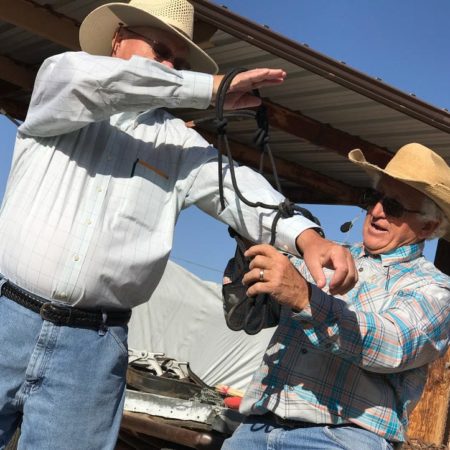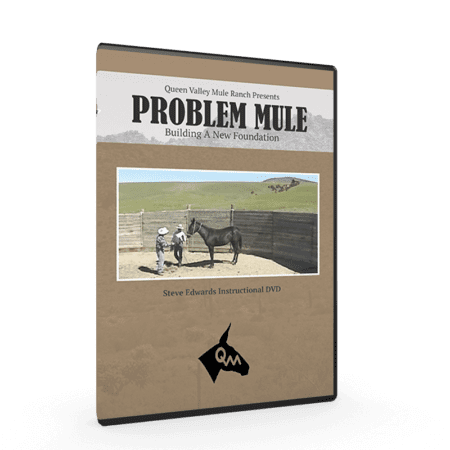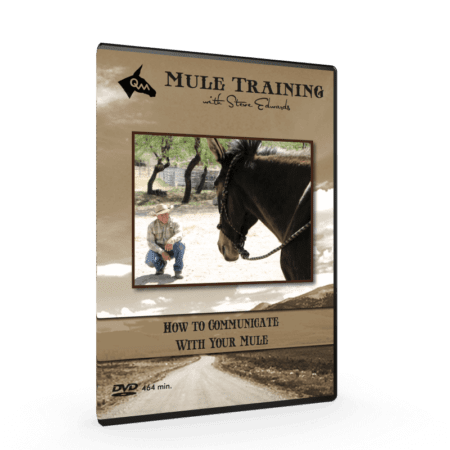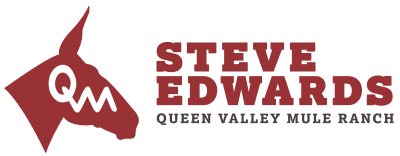Can A Horse Trainer Train A Mule?
Many people that have behavior issues with their mules or donkeys are due to the fact that they used a horse trainer for their animal. In this post, Steve Edwards explains why this can be a problem.
Many people that I talk to about behavior issues with their mules or donkeys, start out by telling me that they have either taken their mule or donkey to a trainer or had one come in. It only takes a couple of minutes to get to the fact that they used a horse trainer for their animal. This pretty much explains the failure to correct the issues the person is having. Let me elaborate for you.
Horse Trainers and Mule Trainers
I have a great friend named Dr. Robert Miller. Bob is a veterinarian who had an interest in mules and donkeys. We use a lot of long ears in the Arizona area because of the heat and the terrain. Since we are friends, I have done some training for him and we have become very like-minded when it comes to mules and donkeys. We have talked at length about mulemanship, horsemanship and the differences between the two.
We traveled together to Brazil in 2006 when I was invited to International Equus where scores of world renowned trainers gathered to share and show their equine ideas. There, we met Fernando Rolin who was our host for the event and was extremely interested in expanding knowledge about training donkeys and mules.
Fernando was a natural when it came to communicating with mules and donkeys. He had a quiet, confident way and a natural ability to work with the animals. I was amazed at how quickly he digested the information we were telling him about mules and donkeys and put it to use. He was so taken with mules and donkeys that he visited the States; I had the opportunity to work with and train him on three different occasions. We even went on an elk hunt in Montana during one of our trips.
A Rushed Approach vs Building a Solid Foundation
While we were in Brazil with so much talent all around us, Bob mentioned that he felt that horses were more forgiving than mules and donkeys. During this discussion, he pointed out that lots of horse trainers take a bit of a rushed approach to accomplishing tasks, rather than building a solid foundation. We agreed that foundation is the single, most important thing you can give a mule or donkey. And we agreed that a good foundation can take around six months to build and solidify.
Most horse trainers work on the “thirties” – they will have a horse train for 30, 60 or 90 days. Rarely does an owner want to pay for or wait for six months while their horse is being trained. With horses, you can often get away with such a schedule because the horse thrives on repetition. But a mule or donkey will not be bullied or bluffed into doing what he feels is not in his best interest. They are smart. That foundation building time is worth its weight in gold when it comes to long ears.
Speaking the Mule or Donkeys Language
But getting back to our Equus experience, I had done a demonstration with the mule. The standing ovation deeply humbled me and I was delighted that so many people were interested in mules and donkeys. I followed Dennis Reese, who did an awesome job of colt starting. His colt was a 14 hand horse that gave him a real run for his money – fighting at every turn. But Dennis is great and he got the job done.
Fernando was next into the round pen and he was working with a young mule. He was attempting to move the hindquarters of the mule. He tried using conventional horse principles and was not having any luck. Mules, you see, need to have this process started from the nose. No amount of looking at the rear end or using s crop or whip will be successful. In fact, a mule is most likely to give a kick or two if you don’t “speak his language” and start your communication with his nose. That is exactly what happened with Fernando. To his credit, he noted that he was surrounded by world class trainers and asked for help. The early responders wanted to tie a hind foot up to get the mule to give authority to the trainer. Bob was on his way to the round pen as was I, and at the gate, he said to me, “that mule doesn’t need to have his foot tied up.”
I went into the round pen and asked to have the mule. The horse trainers were not particularly happy with the challenge of their principals, but within a few minutes of using the come-a-long and a properly adjusted rope halter, I was moving the shoulders and the hindquarters with ease – no fight or fuss. My success was met with a standing ovation and many requests for autographs and pictures.
Foundation is Everything
Now make no mistake – I was not looking for a pat on the back. I was thinking only of the mule and what would make sense to him. There is a big difference between the repeated repetitions and blind faith requests that horses can appreciate and the psyche of the mule. The mule has a great sense of self-preservation and he is smart and cunning about it. He is a thinker. He judges the wisdom of the request, then he plots his response. For him, foundation is everything.
Proving that you are a worthy and knowledgeable leader who builds from groundwork to saddle work without rushing and without setting deadlines is key and at the heart of your success in training a mule or donkey. Teaching your mule that you want him to stand quietly for tacking and mounting, be a good barn and pasture citizen and a great partner in work or under a pleasure saddle starts with groundwork. For me, that means the come-a-long, a rope halter, the mule rider’s martingale, and a pile of patience. Repetition is not as important as making good progress, then allowing the mule to “think it over.” Training all day, every day will not get you as far as training well for a few hours, then let the mule “digest” what he has learned before asking him again.
Horses and Mules Thrive on Different Leadership Styles
I am not criticizing or bashing horse trainers! Not at all! But they are working with a different animal. They are working with an animal who thrives on repetition and being led without a ton of questions. They are training an animal that counts on you to think for him in many instances and he agrees to follow your lead. They are dealing with an animal that wants to be released as his reward and will perform consistently to get that release.
Mules get much of their intelligence and baseline talents from the donkey. Donkeys are awesome to work with – showing you that you must prove yourself as a leader. Whether you want them to pack, drive or ride, you need to create an environment that works with his sensibilities. You need to take your time and build the foundation, one step at a time from the ground up. The same is true of mules. The mule is not seeking the same “release” that is so highly successful with the horse. While a release may work for some skills, the biggest thing Mr. Mule is seeking is the belief that you and he are on the same page. No treats or whips or dozens of repetitions are going to get you far with a donkey or mule. But a clear mind, an honest intent and a reasonable way to work together will get you not only the behaviors you want but the devotion of your mule.
If you think of the typical horse clinic, you will hear about lateral flexion, helping the horse seek and find “release” and such. I’m here to tell you that you can put a mule’s nose on his side and he can still run full tilt. But give him a reason that he understands to be light in the bridle, and your mule will comply. Watch for part two of this article next month. In the meantime, when looking for a mule trainer – make sure you are not hiring a horse trainer who thinks mules can’t be too much different. Find out how many mules the trainer has trained, get references, and if you can visit some mules that he or she has trained. The proof is in the pudding.
Thanks for reading, and remember I am always available for questions. Just give me a holler.
-
 Mule Ground Foundation Starting KitRated 5.00 out of 5 based on 12 customer ratings
Mule Ground Foundation Starting KitRated 5.00 out of 5 based on 12 customer ratings -

 Problem Mule, Building a New FoundationRated 4.14 out of 5 based on 7 customer ratings
Problem Mule, Building a New FoundationRated 4.14 out of 5 based on 7 customer ratings -

 How to Communicate with Your Mule (5 Videos)Rated 5.00 out of 5 based on 6 customer ratings
How to Communicate with Your Mule (5 Videos)Rated 5.00 out of 5 based on 6 customer ratings
- Posted in: Articles, Everything
- Tagged: Articles, Everything


